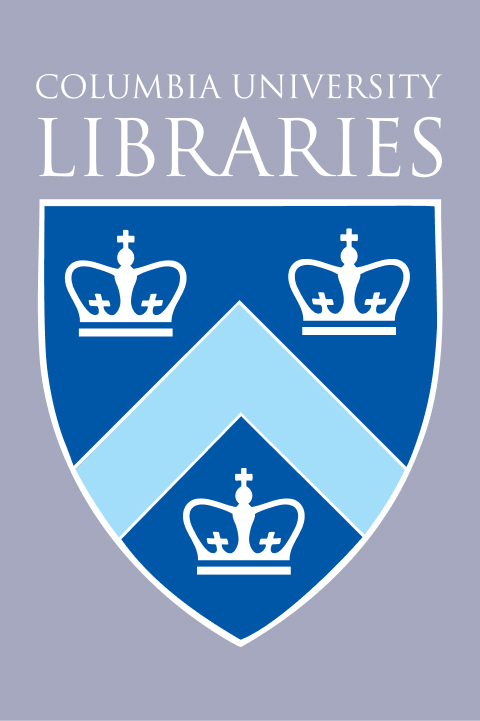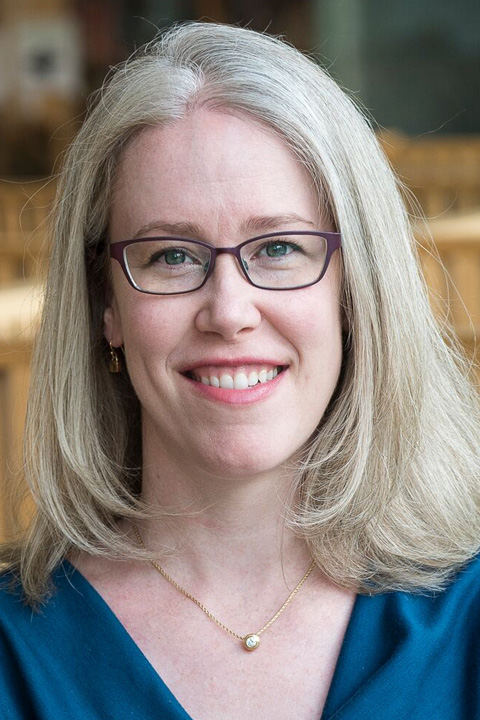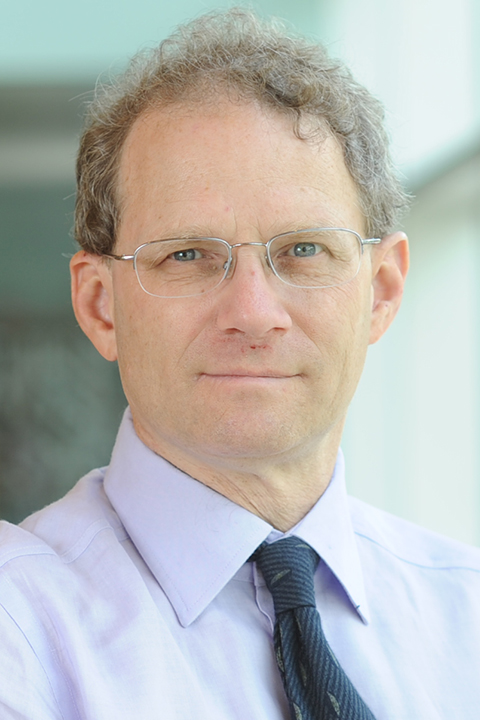Architecture
For over 125 years, Avery Architectural & Fine Arts Library has served a worldwide community of scholars by documenting the built environment and the world’s cultural heritage. From its founding in 1890 to today, Avery Library has been committed to acquiring, documenting, preserving, and making accessible the most important works and research literature for fine arts and architecture and has historically been considered a “library of record” for architecture.
Avery Library is named for Henry Ogden Avery, one of late 19th-century New York's promising young architects and a friend of William Robert Ware, who founded the Department of Architecture at Columbia in 1881. A few weeks after Avery's premature death in 1890, his parents, Samuel Putnam Avery and Mary Ogden Avery, established the library as a memorial to their son. They offered 2,000 of his books, mostly in architecture, archaeology, and the decorative arts, many of his original drawings, funds to round out the book collection, and an endowment to assure the continuous growth of the library.
The architecture collection contains material in the fields of architectural design, architectural history, decorative arts, design, fashion design, historic preservation, interior design, landscape architecture, real estate development, urban design, and urban planning. Material from all geographic regions and in all languages is collected. Collection suggestions from students and faculty are welcome.
a. Undergraduate
The Libraries collects materials in support of the following programs of the Graduate School of Architecture, Planning and Preservation (GSAPP) that serve undergraduates: Introduction to Architecture summer program and the New York/Paris Certificate. It also supports undergraduate students whose research overlaps with architecture.
b. Graduate and Professional Schools
The Libraries collects materials in support of ten graduate and doctoral degree programs of GSAPP in architecture, historic preservation, real estate development, urban design, and urban planning. It also supports graduate and doctoral programs of the Department of Art History and Archaeology.
c. Institutes and Interdisciplinary Programs
Materials collected by the Libraries support the research and educational efforts of several centers of GSAPP, including the Buell Center, the Center for Resilient Cities and Landscapes, the Center for Spatial Research, and the Center for Urban Real Estate (CURE).
d. Course Reserves
Selection for course reserves is initiated by individual faculty members. Every effort is made to secure titles, with a preference for e-books if available.
a. Print
Avery Library actively acquires print material on all aspects of the built environment. Western European and North American monographs, exhibition catalogs, and periodicals are acquired for the collection by Avery librarians. Those published in the rest of the world are acquired by the following Global Studies librarians: African Studies Librarian, Latin American & Iberian Studies Librarian, Middle East & Islamic Studies Librarian, Russian, Eurasian & East European Studies Librarian, and South & Southeast Asian Studies Librarian. The C.V. Starr East Asian Library acquires materials published in vernacular Eastern languages.
b. Digital Collections
Columbia University Libraries offers a robust variety of electronic resources. In architecture, the Libraries strives to offer the full array of available databases relevant to the field. The amount of e-book titles purchased has been rapidly increasing over the last three years. A concerted effort is made to acquire e-books, as opposed to print, in the subjects of historic preservation, real estate development, and urban planning.
Since 2010, the Architecture Librarian has been comprehensively and systematically collecting websites for the Avery Library Historic Preservation and Urban Planning Web Archive. This collection documents the evolution of the built environment and public spaces through the interaction of historic preservation efforts and new development projects within urban planning debates, particularly in and around New York City. It is available in Internet Archive and all individual websites in the collection have a catalog record in CLIO, the Libraries’ online catalog.
The Collaborative Architecture, Urbanism, and Sustainability Web Archive (CAUSEWAY), started in 2014, is a joint initiative by the art and architecture librarians in the Ivy Plus Library Confederation. Websites devoted to the related topics of architecture, urban fabric, community development activism, public space, and sustainability are collected. This collection is also available in Internet Archive and all websites selected by the Architecture Librarian have a catalog record in CLIO.
In addition, individual websites focusing on areas of research interest are added to CLIO as they are identified.
c. Media
Nearly 1,000 videos, primarily documentaries, on DVD and VHS about all aspects of the built environment, are available in the Butler Media Collection. The Librarian for Butler Media, Film Studies, & Performing Arts is primarily responsible for collecting media, with input from the Architecture Librarian.
d. Languages Collected
All languages are collected, except for texts in Chinese, Japanese, Korean, and Tibetan, which are collected in the C.V. Starr East Asian Library. Some Japanese language materials are collected in the Avery Classics Collection.
e. Chronological Focus
All chronological periods are collected.
f. Geographic Focus
All geographic areas are collected. Material published in North America and Western Europe covering all geographic regions is selected by the Architecture Librarian. Materials published in Africa, Latin America, the Middle East, Russia, Eurasia and Eastern Europe, and South and Southeast Asia are selected by subject specialists in those areas and are housed in Avery Library and the Libraries’ shared off-site storage facility (ReCAP). East Asian material in Chinese, Japanese, Korean, and Tibetan are collected and housed in the East Asian Library, with the exception of some rare Japanese-language materials collected and housed in Avery Classics.
g. Imprint Dates Collected
The main focus of collecting is current and recent (+/- three years) imprints. When antiquarian acquisitions are offered via gift or purchase, no specific chronological ranges are established in advance; rare or unique materials from any period may be considered.
One of Avery Library’s strengths is in the periodical literature of architecture. The collections include complete runs of important periodicals of the nineteenth and twentieth centuries, including American Architect and Building News, Architectural Sketchbook (Boston), The Brickbuilder, Le Revue Generale de l’architecture et des travaux publique, Casabella, Oppositions, Pencil Points, Gatepac, L’Esprit Nouveau, Wendingen and De Stijl, and a growing collection of pre-war avant-garde European journals.
The Avery Classics Collection is the rare book collection of Avery Library and one of the largest architectural rare book collections in the world. It contains approximately 40,000 printed volumes published over seven centuries, from Leon Battista Alberti’s De re aedificatoria (1485) to Ólafur Elíasson’s Your House (2006). Avery Classics also has important holdings of graphic suites, periodicals, manuscripts, broadsides, photographs, and printed ephemera. Its strengths reflect the library’s original subject scope, established by Avery’s founders in 1890, that is architecture, archaeology, urban planning, and the decorative arts of Western Europe and America. Avery Classics still actively collects in all of these historical areas. Responding to recent directions in scholarship, Avery Classics has also begun to collect modernist publications from Eastern Europe, Latin America, and Japan. All Avery Library books that were produced before 1801 are in Avery Classics. The collection also includes significant editions of major works created after 1800, as well as works that possess distinctive physical characteristics, such as special bindings, exceptional printing, innovative design, autograph inscriptions, or other signs of notable former ownership. Significant ephemeral collections within Avery Classics are: the Trade Catalog Collection, which is one of the largest collections of catalogs of the American building trades anywhere; the American View Book Collection, which includes books, pamphlets, and brochures that document cities, towns, and buildings throughout the United States; the American Dream Collection which documents the subdivision of the American landscape into suburban and commercial agri-parcels; and the Real Estate Brochures Collection focused on residential buildings in New York City. Master’s theses in GSAPP’s Historic Preservation and Urban Planning programs prior to 2012 are also included in Avery Classics. Since 2012, the theses are digital and physical copies are no longer housed in Avery Classics.
The Avery Drawings & Archives Collection consists of drawings and architectural records documenting American architecture of the nineteenth and twentieth centuries. With more than nine hundred archives catalogued by architect, the holdings in Drawings & Archives include a diverse range of original and reprographic drawings, photographs, building and project files, business papers, correspondence, diaries, scrapbooks, and films, as well as faculty and personal papers. Major architects represented include Louis Sullivan, Philip Johnson, Felix Candela, Wallace Harrison, Max Abramovitz, Shadrach Woods, and Skidmore, Owings & Merrill. The built environment of New York is strongly represented in the collection and includes material related to skyscrapers, apartments, zoning, and significant urban designs, such as Rockefeller Center, the United Nations, and Lincoln Center. The largest collection is the Frank Lloyd Wright Foundation Archives. Jointly acquired with the Museum of Modern Art in 2012, it is one of the most comprehensive archives of an American architect. The collection also holds large numbers of student Beaux-Arts drawings and a significant photography collection that includes the Empire State Building photographs by Lewis Hine. Experimental and contemporary practices, such as Douglas Darden and Ant Farm, are a growing collection focus, together with practices that address questions of social and environmental justice.
The Rare Book & Manuscript Library holds two collections of note related to architecture. The Joseph Urban Papers, 1872--1933 collection contains watercolor renderings, sketches, technical drawings (ground plans, elevations, and details), photographs, glass plate and acetate negatives, scrapbooks, set models, and some related papers covering Urban's career in Vienna and New York as an architect, set designer, decorator, and illustrator. The Frederick Fried Coney Island Collection, 1847--2001 documents the history of the amusements industry and the public culture of Coney Island (Brooklyn, New York). Included are photographic materials, drawings, and blueprints. RBML also holds the papers of art historians Meyer Schapiro (1904--1996) and Rudolf Wittkower (1923--1978), as well as landscape architect Gilmore D. Clarke (1892--1982).
a. Consortia and Collaborative Collecting with Other Institutions
The Collaborative Architecture, Urbanism, and Sustainability Web Archive (CAUSEWAY), started in 2014, is a joint initiative by the art and architecture librarians in the Ivy Plus Library Confederation. Websites devoted to the related topics of architecture, urban fabric, community development activism, public space, and sustainability are collected.
b. Location Decisions and Selection for ReCAP
Due to space constraints in Avery Library, the vast percentage of new acquisitions are located in the Libraries’ shared off-site storage facility (ReCAP), with the exception of titles on individual architects and architectural firms, New York City, Frank Lloyd Wright, and selected surveys, reference works and collected essays, which are in the Avery Library stacks.
Intentional duplication of titles does not take place.
Deduplication only takes place if a title has been identified for relocation to ReCAP and a copy already exists on shelf at that facility. Even in this instance, the Librarian would inspect the copy that would potentially be withdrawn for any unique features/unusual provenance before assenting to deduplication. Very few of the materials acquired for Avery Classics are sent to ReCAP with the exception of fine arts facsimiles and some stable 20th-century materials that are scarce, but not particularly valuable.
c. Deaccessioning
Titles are generally deaccessioned only in cases where the physical copy is disintegrating and no longer serviceable in print/physical format. In these instances, the Librarian will evaluate whether to replace the physical copy with another. Resources on obsolete formats are reviewed by librarians on a case-by-case basis; in instances where the original format has artifactual value, it will be retained even after it has been digitized or otherwise reformatted. Materials located in the Avery Classics Collection are never deaccessioned.
d. Digitization and Preservation
In an effort to expand online access to research literature in architecture, Avery undertakes selective digitization of unique materials and public domain publications from the extensive collections. Online access to digitized texts is provided through CLIO, the Libraries’ online catalog. Digitized texts are also shared through cooperative repository and access sites, including the Hathi Trust and Internet Archive, as well as through specialized discovery environments. Examples include the Real Estate Record, a weekly report of building activity in New York City and its environs and covers the years 1868--1922, and the Durst Collection, 35,000 items documenting more than four centuries of New York history of which 20,000 items including books, postcards, maps, and ephemera are digitized.
In recent years, Avery Library has produced a number of digital projects showcasing items from the special collections--Avery Classics (rare books) and Avery Drawings & Archives--including rare books, architectural drawings and photography, and ephemeral materials.

Christine M. Sala
Architecture & Fine Arts Librarian
- Avery Library

Teresa M. Harris
Director, Avery Architectural and Fine Arts Library
- Avery Library

Yuusuf Caruso
African Studies Librarian
- Global Studies

Robert H. Davis
Russian, Eurasian & East European Studies Librarian
- Global Studies

Gary Hausman
South Asian Studies Librarian
- Global Studies

Peter Magierski
Middle East & Islamic Studies Librarian
- Global Studies
Last updated: April 2019